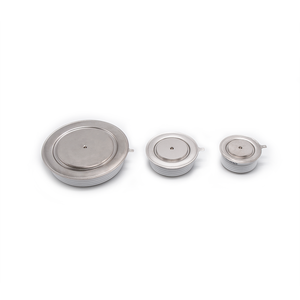Thyristors Online | High-Quality Power Semiconductors
PRODUCT PARAMETERS
Description
Overview of Heatlinks
Heatlinks function by providing a path of low thermal resistance between a heat source (such as an electronic component) and a heat sink or cooling system. They can be particularly useful in environments where space constraints limit the use of traditional cooling methods, or when a passive thermal management solution is preferred.
Heatlinks can operate based on different principles, including phase change materials, solid-state conduction, or even fluid-based systems. The choice of technology depends on the application’s specific requirements, such as operating temperature range, power dissipation levels, and spatial limitations.
Features of Heatlinks
High Thermal Conductivity: Designed to offer high thermal conductivity, ensuring efficient heat transfer from the source to the sink.
Compact Design: Often compact, allowing them to fit into tight spaces within electronic assemblies or other equipment.
Passive Operation: Typically do not require external power to function, relying instead on the natural flow of heat from hot to cold areas.
Durability and Reliability: Manufactured to withstand repeated thermal cycles and harsh environmental conditions without degradation of performance.
Low Profile: Thin profiles help minimize the impact on the overall design of products.
Versatility: Can be tailored to fit various applications, from consumer electronics to industrial machinery and aerospace components.
Customizable: Available in different shapes, sizes, and configurations to meet specific design needs.
Cost-Effective: Provide an economical solution for thermal management compared to more complex cooling systems.
Minimal Maintenance: Generally require little to no maintenance once installed.
Environmental Compatibility: Designed to be compatible with a wide range of environments, including those that may contain corrosive elements or experience significant temperature fluctuations.

(Aluminium Profile Cooling Heatsink Product CNC machining)
Specifications of Aluminium Profile Cooling Heatsink Product CNC machining
The product makes use of state-of-the-art aluminum alloy. Typical choices include 6063 and 6061. These products balance strength and heat dissipation. Thermal conductivity ranges between 200-220 W/m · K. This ensures effective heat move far from sensitive components. The heatsink is used CNC machining. Accuracy is an essential feature. Resistances stay within ± 0.05 mm. This assures consistency throughout huge production batches. Complex shapes and fine details are attainable. The process prevents sharp edges or burrs. Surface coatings are adjustable. Choices consist of anodizing or powder covering. Plating boosts rust resistance. It additionally allows shade personalization. Powder finishing adds extra toughness. This safeguards against scrapes or ecological damages. Criterion accounts vary in size. Normal sizes range from 50 mm to 500 mm. Personalized sizes are available upon request. Base density begins at 3 mm. Fin elevations adjust between 5 mm and 30 mm. Layout flexibility fulfills diverse cooling demands. Fins are spaced for optimal airflow. This makes the most of surface exposure. Applications cover electronic devices and commercial systems. Examples consist of LED illumination and power materials. Automotive elements and computer hardware additionally make use of these heatsinks. Mounting choices include pre-drilled openings or glue pads. Setup remains easy. No specialized tools are needed. CNC machining supports fast prototyping. Alterations can be evaluated promptly. This reduces product development cycles. Quality checks follow rigorous requirements. Each device undertakes thermal performance screening. Architectural honesty is confirmed under stress. Random samples are inspected for surface area defects. Product packaging utilizes anti-static materials. This prevents damage throughout shipping. Mass orders consist of protective foam inserts. Customized branding is readily available for company customers. Technical support helps with design optimization. Designers aid choose the best account for details warm lots. Environmental conditions like moisture or temperature extremes are taken into consideration. The product meets RoHS and REACH compliance criteria. Lead times rely on order complexity. Standard designs ship within 5-7 service days. Rush orders are suited when feasible.
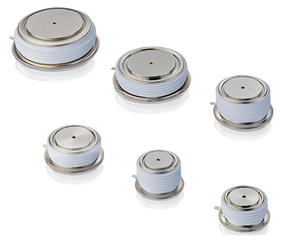
(Aluminium Profile Cooling Heatsink Product CNC machining)
Applications of Aluminium Profile Cooling Heatsink Product CNC machining
Light weight aluminum account cooling heatsinks made through CNC machining offer numerous functions across markets. These products manage warmth in digital tools. They keep elements like CPUs, GPUs, and power transistors from overheating. This makes sure steady performance and longer life expectancies for devices. Computers, smartphones, and web servers rely upon these heatsinks daily.
The vehicle industry uses light weight aluminum heatsinks in electrical automobiles and crossbreed systems. Battery packs and onboard battery chargers create significant heat. Efficient air conditioning protects against damages and keeps safety. CNC-machined heatsinks fit precisely into limited areas. This modification is vital for contemporary vehicle designs.
LED lights systems rely on these heatsinks too. High-power LEDs create heat that impacts brightness and resilience. Aluminum profiles take in and spread this warm successfully. CNC machining enables forms that match certain component designs. This improves both function and aesthetics in property and industrial lights.
Industrial machinery take advantage of light weight aluminum air conditioning remedies. Motor drives, power products, and automation devices call for constant thermal control. CNC-produced heatsinks manage high thermal lots in rough settings. Their light-weight nature minimizes strain on equipment structures. Corrosion-resistant layers extend functionality in damp or chemical-heavy setups.
Renewable resource systems like solar inverters and wind generators make use of these heatsinks. Secure temperature levels make certain energy conversion effectiveness. Light weight aluminum’s high thermal conductivity makes it ideal for distributing warm from power electronic devices. CNC machining produces maximized styles for optimum surface area exposure. This enhances air conditioning without adding bulk.
CNC machining provides precision for intricate heatsink geometries. Tight resistances ensure perfect call between the heatsink and warmth source. This reduces thermal resistance. Automated manufacturing ranges easily for huge orders. Constant quality meets industry requirements for reliability.
Light weight aluminum’s toughness and recyclability add ecological advantages. It endures physical anxiety and stands up to wear with time. Industries prioritize lasting products. Aluminum cooling solutions straighten with eco-friendly goals without giving up efficiency.
Personalized designs address unique task needs. Engineers adjust fin density, base thickness, and general measurements. This adaptability sustains development in warm administration. CNC technology adjusts promptly to develop modifications. Quick prototyping accelerate product growth cycles.
Aluminum profile cooling heatsinks continue to be important ahead of time modern technology. Their role in thermal administration grows as tools lessen and extra effective. CNC machining makes certain these elements fulfill advancing demands successfully.
Company Profile
PDDN Photoelectron Technology Co., Ltd.(sales@pddn.com) is one of the leading enterprises in power electronics technology and power products, which is fully involved in developing solar inverters, transformers, voltage regulators, distribution cabinets, thyristors, modules, diodes, heaters, and other electronic devices or semiconductors. We will be committed to providing users with high-quality, efficient products and considerate service.
It accepts payment via Credit Card, T/T, West Union, and Paypal. PDDN will ship the goods to customers overseas through FedEx, DHL, by sea, or by air. If you want high-quality Aluminium Profile Cooling Heatsink Product CNC machining, please send us inquiries; we will be here to help you.
Payment Methods
L/C, T/T, Western Union, Paypal, Credit Card etc.
Shipment
By sea, by air, by express, as customers request.
Storage Conditions
1) Store in a dry environment at room temperature.
2) Avoid damp and high temperature.
3) Use immediately after opening the inner packing bag.
5 FAQs of Aluminium Profile Cooling Heatsink Product CNC machining
Aluminium profile cooling heatsinks made with CNC machining handle heat management in electronics. People often ask these questions. What makes CNC machining suitable for aluminium heatsinks? CNC machining offers high precision. It creates complex shapes and tight tolerances. This ensures heatsinks fit perfectly with other components. CNC machines work fast. They maintain consistency across large production runs. The process reduces material waste. It keeps costs manageable while delivering quality.
Why choose aluminium for these heatsinks? Aluminium conducts heat well. It moves heat away from sensitive parts quickly. Aluminium resists corrosion. This makes heatsinks last longer in different environments. The material is lightweight. It does not add unnecessary bulk to devices. Aluminium is easy to machine. It allows detailed designs without raising production costs.
How precise are CNC-machined heatsinks? Tolerances often reach ±0.05mm. This precision ensures components fit securely. Tight gaps between fins improve airflow. Better airflow boosts cooling efficiency. CNC machines follow digital designs exactly. Errors stay minimal. Each heatsink matches the original blueprint.
Can CNC machining create custom heatsink designs? Yes. CNC handles unique shapes and sizes. It machines thin fins, dense arrays, or irregular patterns. Designers adjust dimensions for specific thermal needs. Custom holes or grooves fit mounting hardware. Surface finishes like anodizing add protection or color. Modifications cost little extra. Prototypes test quickly before full production.
How do manufacturers ensure heatsink quality? Raw materials get checked first. Machines undergo regular calibration. Workers inspect parts during machining. Finished heatsinks face visual and measurement tests. Thermal tests confirm heat dissipation rates. Random samples undergo stress checks. Quality reports document every batch. Certifications like ISO 9001 guarantee standards.
The process focuses on performance and reliability. Each step aims to meet client requirements. Heat management stays efficient and cost-effective.
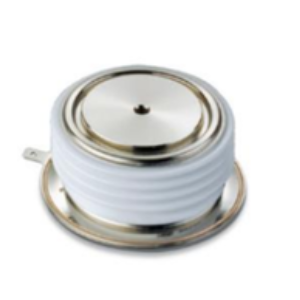
(Aluminium Profile Cooling Heatsink Product CNC machining)
REQUEST A QUOTE
RELATED PRODUCTS
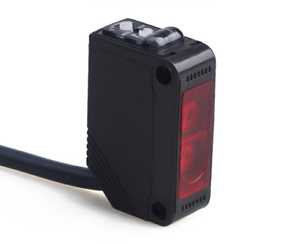
Factory customized aluminum heat sink PV inverter aluminium heatsink led discipador perfil de aluminio

High Performance Custom Aluminum Extrusion Profile Heat Sink Extruded Semiconductor Industry Cooler HeatSink

Custom Design Square heatsink Anodized Extruded Large Aluminum Extrusion Profile Heat Sink

Chengdacai 6061 6063 Custom Anodized Flat Heat Sink Extrusion Aluminium Heatsink Aluminum Heat Radiator
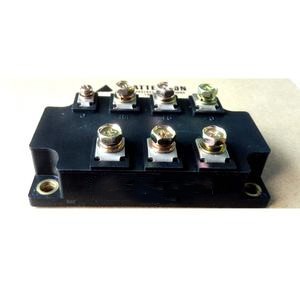
100x100mm Aluminum vc vapor chamber radiator heatsink custom heat pipe heat sink for led quantum board
